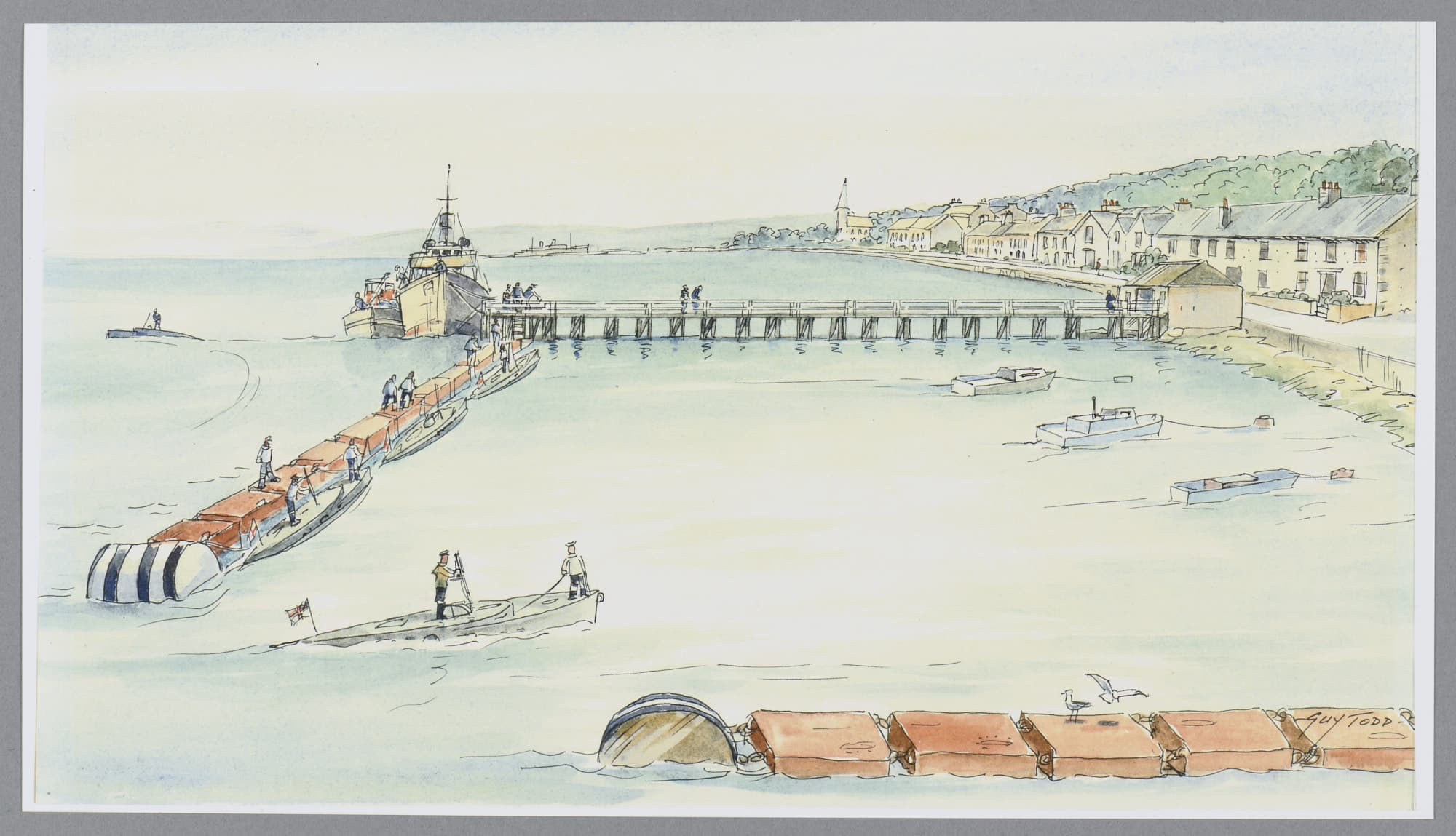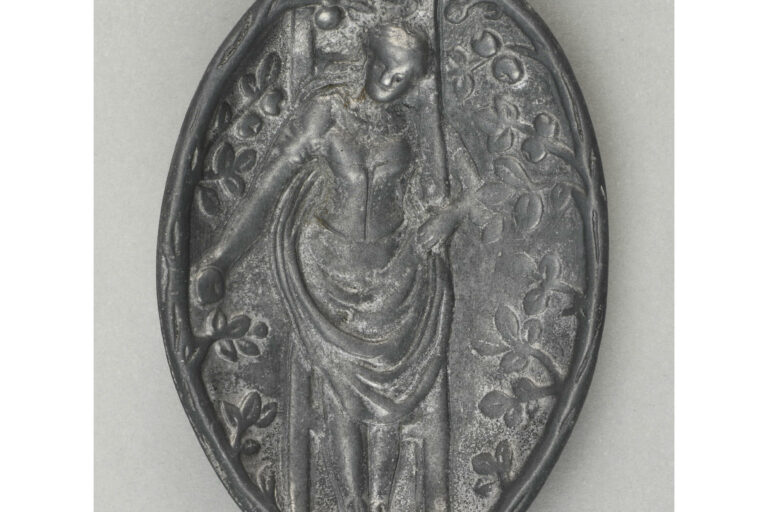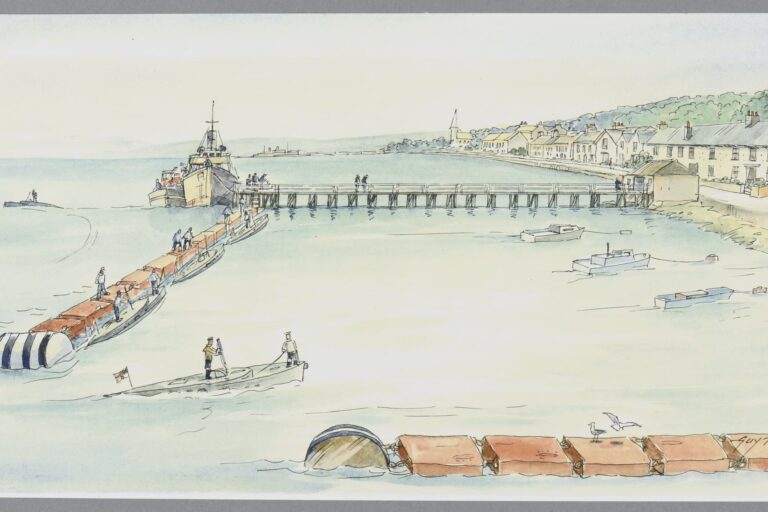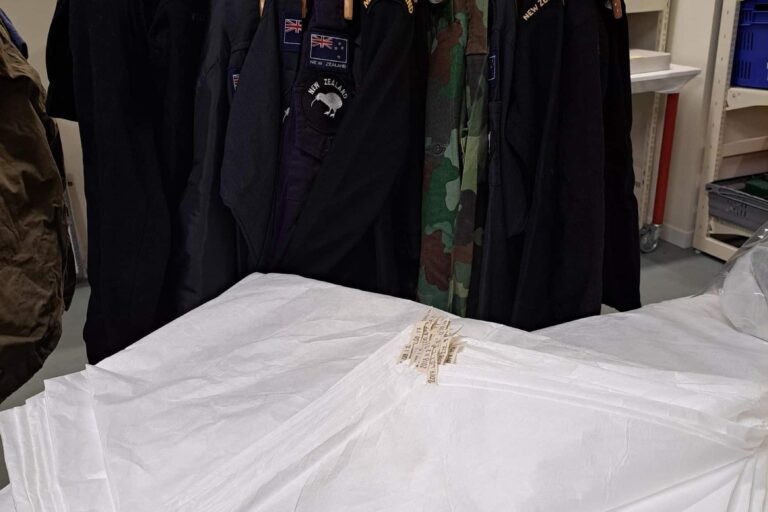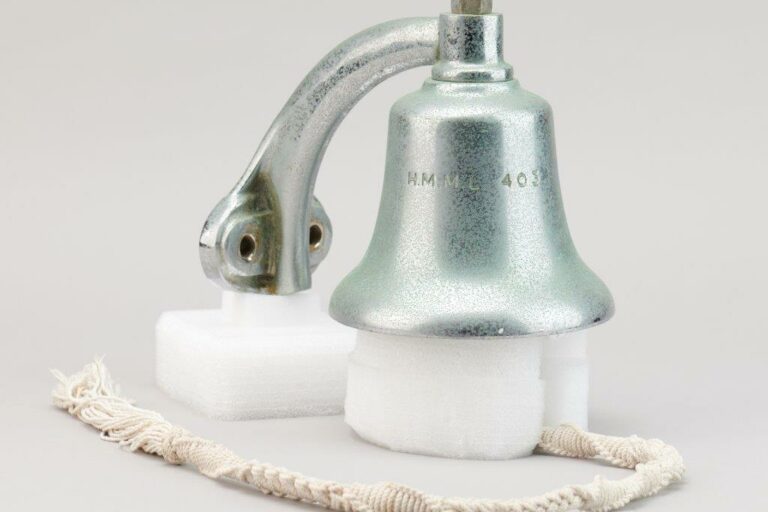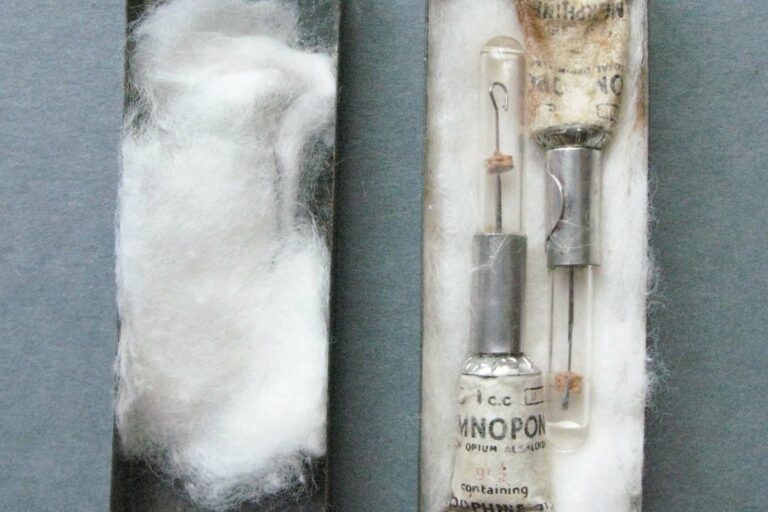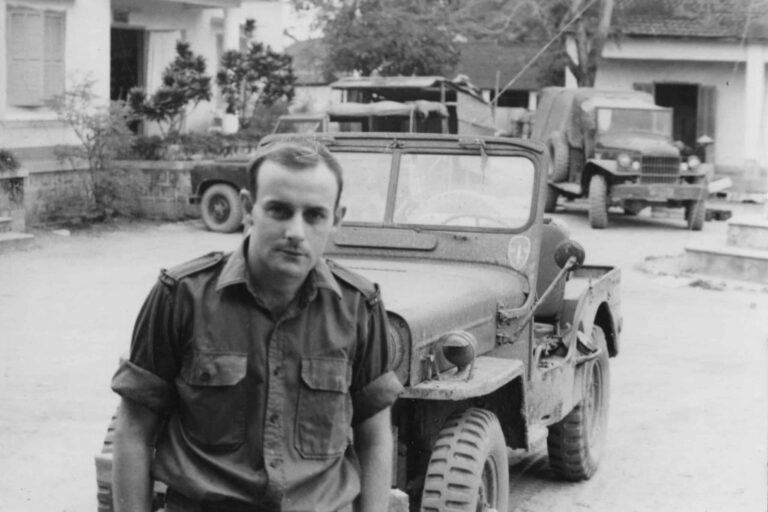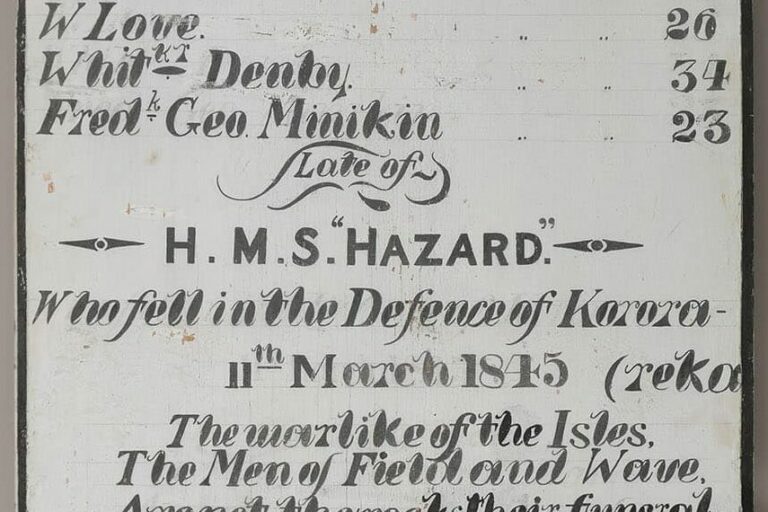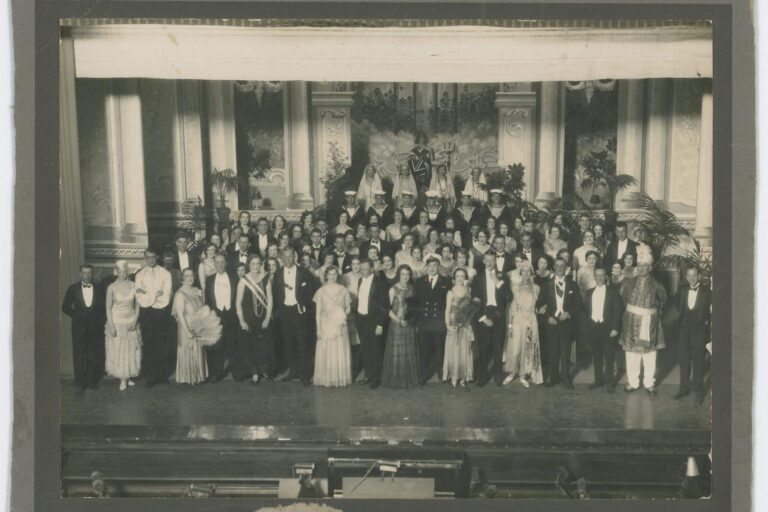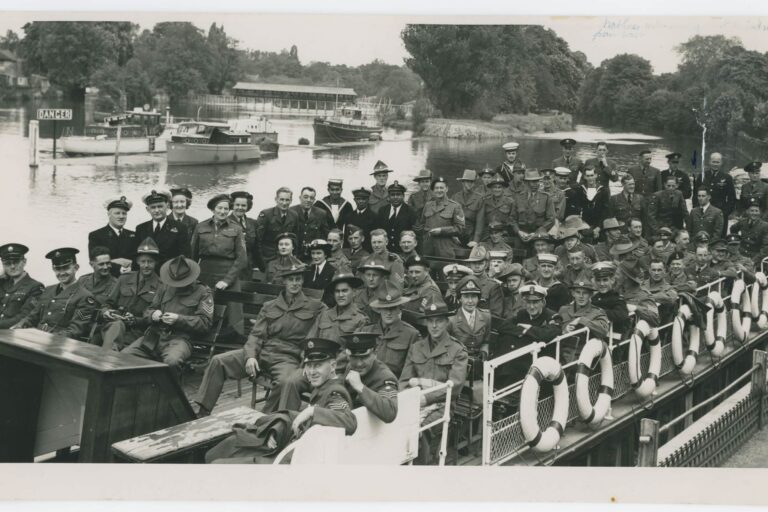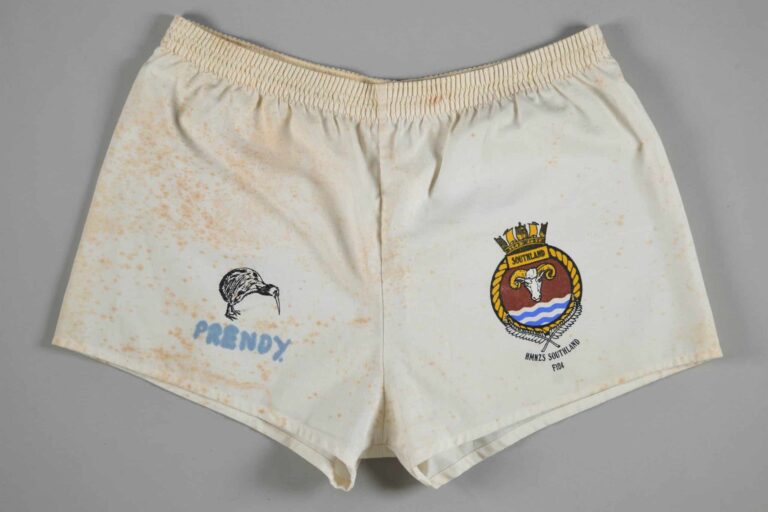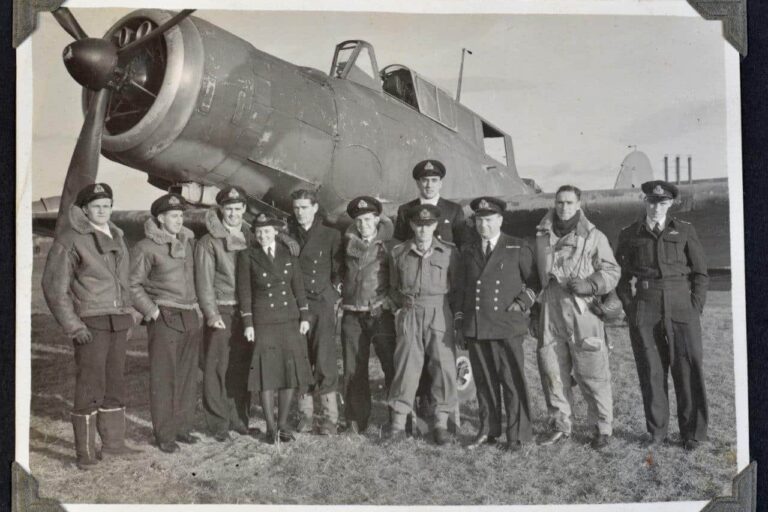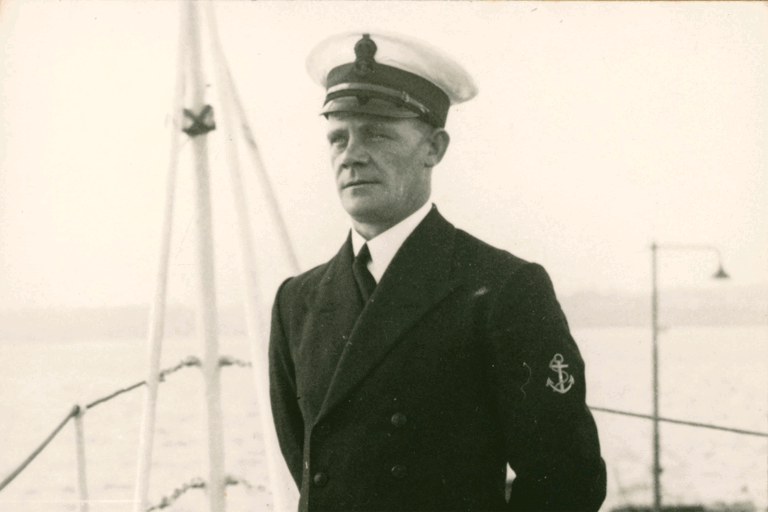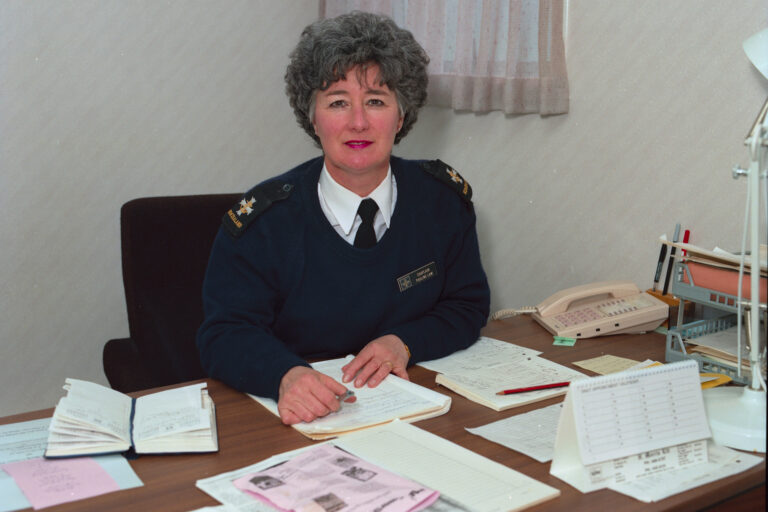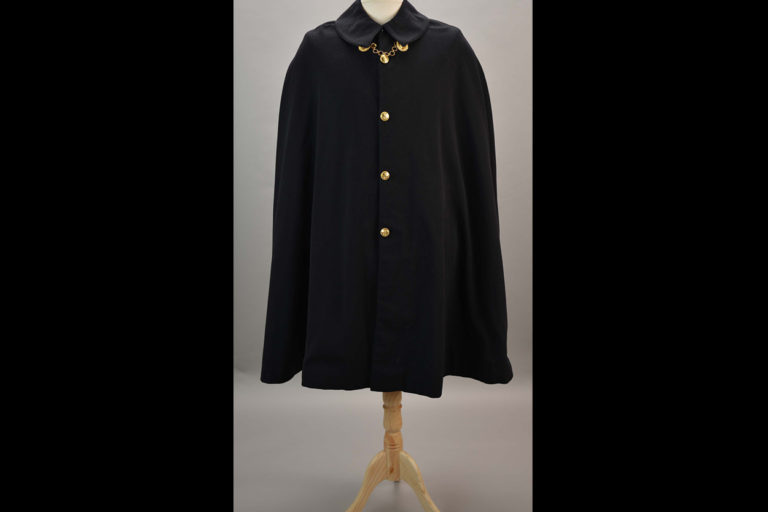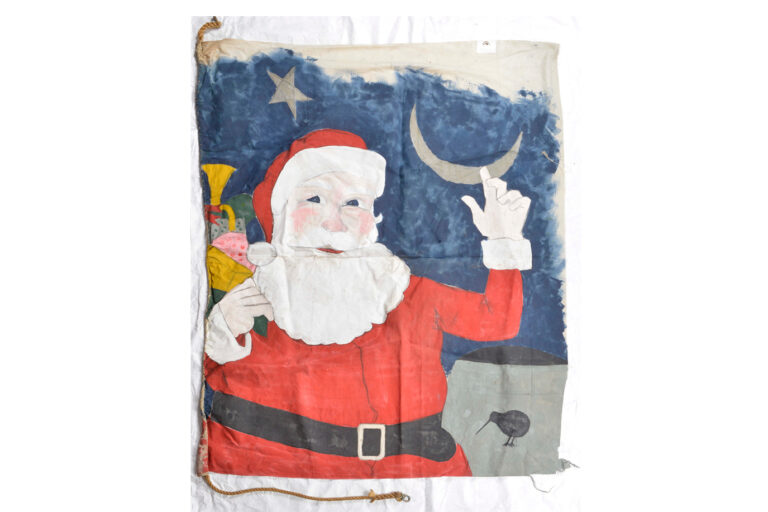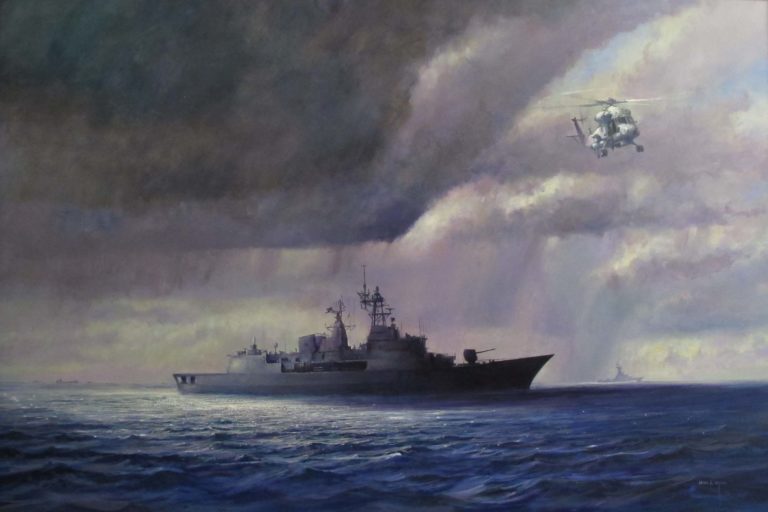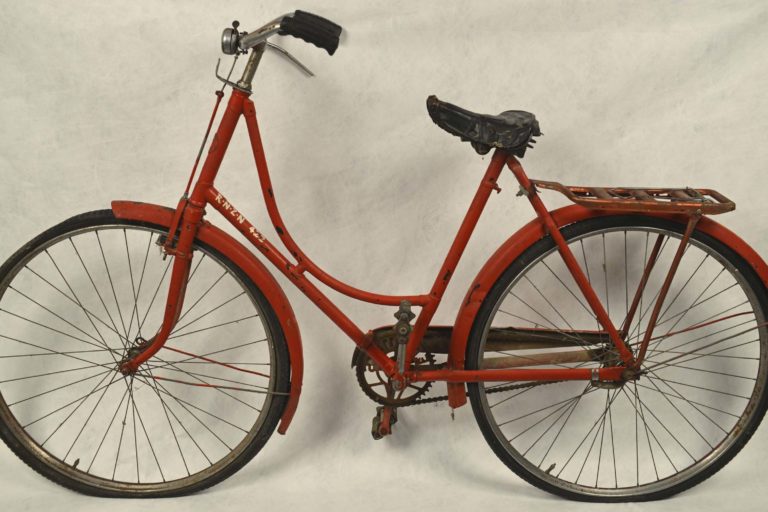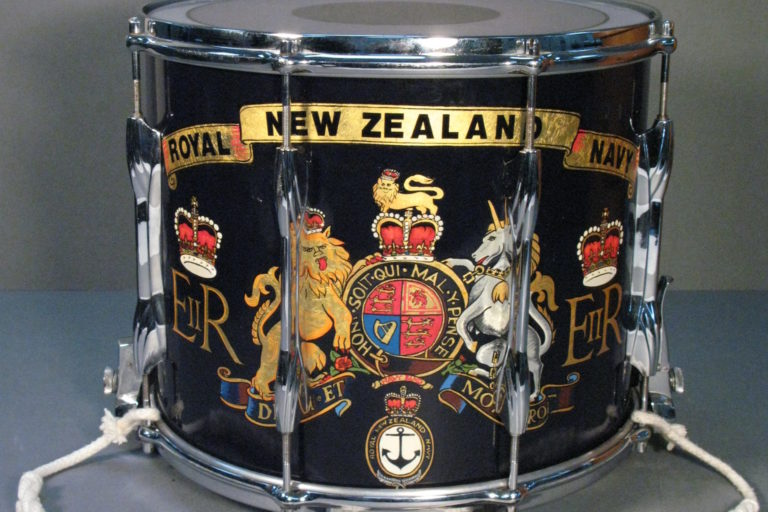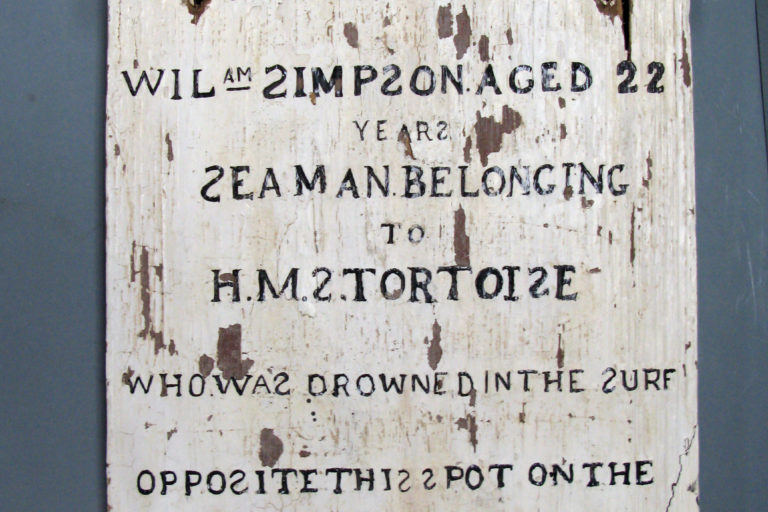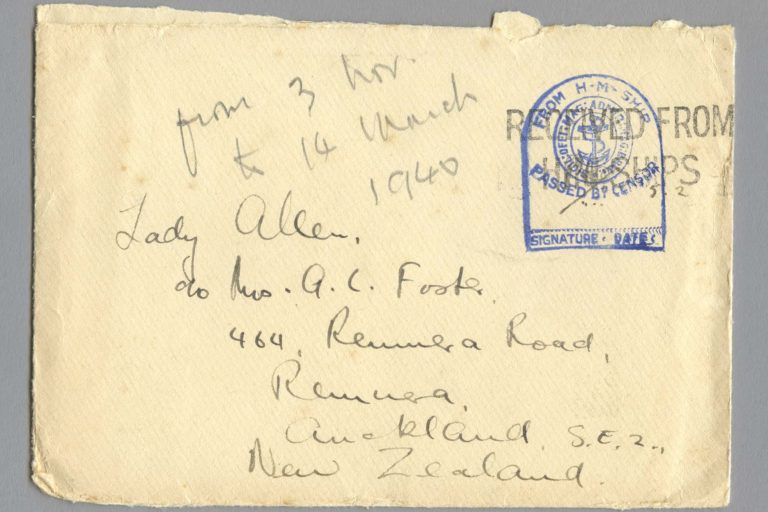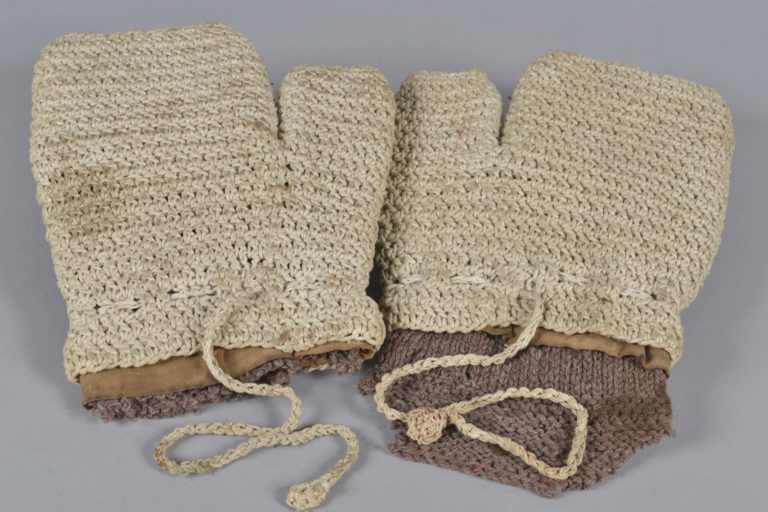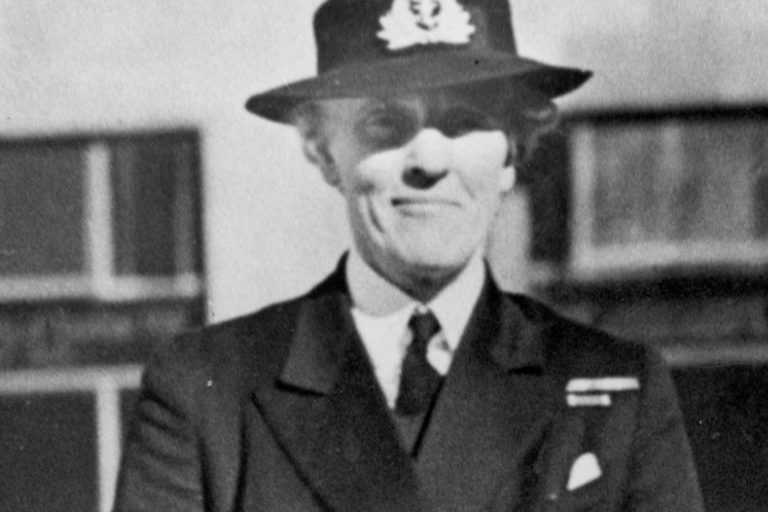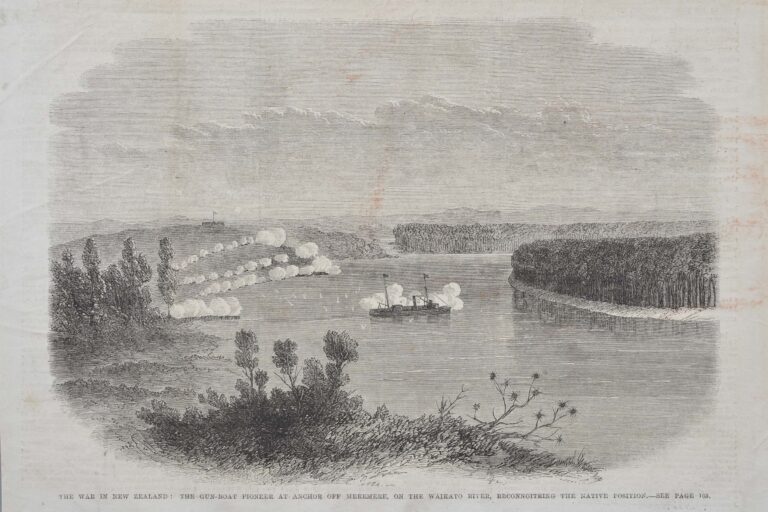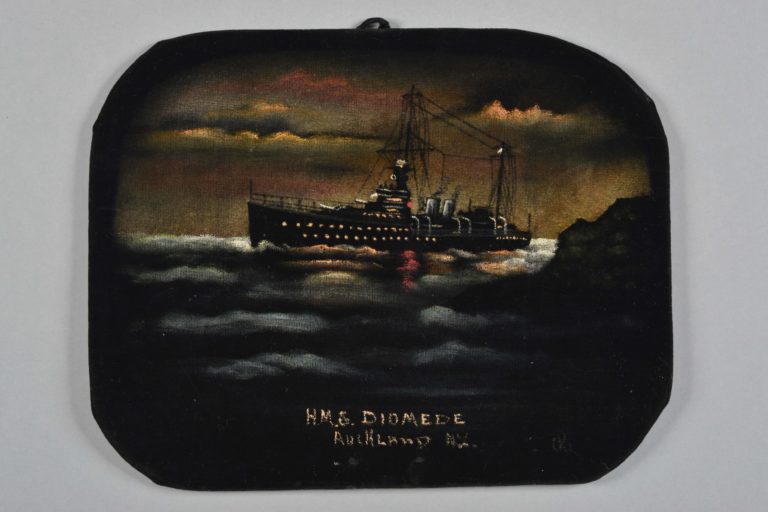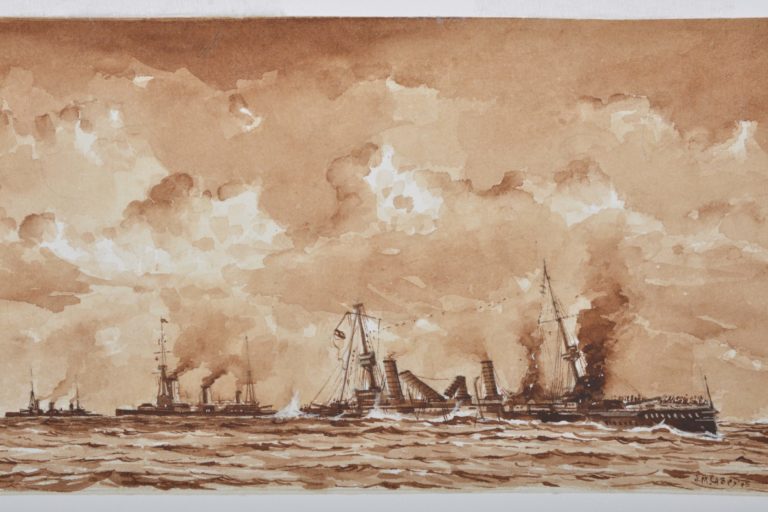Guy Todd served with the Royal Naval Volunteer Reserve (RNVR) as an officer aboard midget submarines in the Second World War. During his service he served alongside New Zealand personnel in the 12th Flotilla, including Sub LT William ‘Kiwi’ Smith who helmed the midget submarine XE3 during Operation Struggle.
Todd was born in China in 1925 and moved with his family back to England in 1936 where he went on to join the Navy at the age of 17. After the war he studied art in London and eventually became a full-time artist once he had relocated to South Africa. Todd eventually settled in New Zealand, moving to Waikanae, where he stayed until his death in 2003. Todd’s time serving in the Navy midget submarine unit influenced a number of the works he produced. Amongst these is an original watercolour painting of a diver cutting a net from outside of a midget submarine – see image below.
![National Museum of the Royal New Zealand Navy, 2007.46.2, Guy Todd, [date unknown] © CC BY 4.0.](https://navymuseum.co.nz/wp-content/uploads/2007.46.2_001-1024x658.jpg)
The history and development of submarine technology and anti-submarine warfare is a fascinating, yet grueling, story of back-and-forth advancements. Anti-Submarine nets had been used in combination with sea mines since the First World War to restrict submarine movement and protect key naval areas from assault. Subsequently, in order to combat these defensive structures, submarines were frequently fitted with a net-cutter device on the front of the vessel.[1]
Todd’s painting shows how a diver would need to emerge from the submarine to operate a cutting device in order to create a hole large enough for the submarine to pass through. Divers would exit the craft via the ‘escape hatch’, wearing a self-contained or close-circuit ‘Sladen’ diving suit, cut their way through the net, and then return inside. Similarly, divers would emerge to place explosives on the keel of ships which they were targeting in an attack – the very method which was used to incapacitate the Japanese ship HIJMS Takao during Operation Struggle.
Towards the end of the war telephone cables also became a target of submarine cutting expertise. Allied submarine crews would scour the bottom of the ocean floor in order to locate and literally sever Japanese communications.[2]
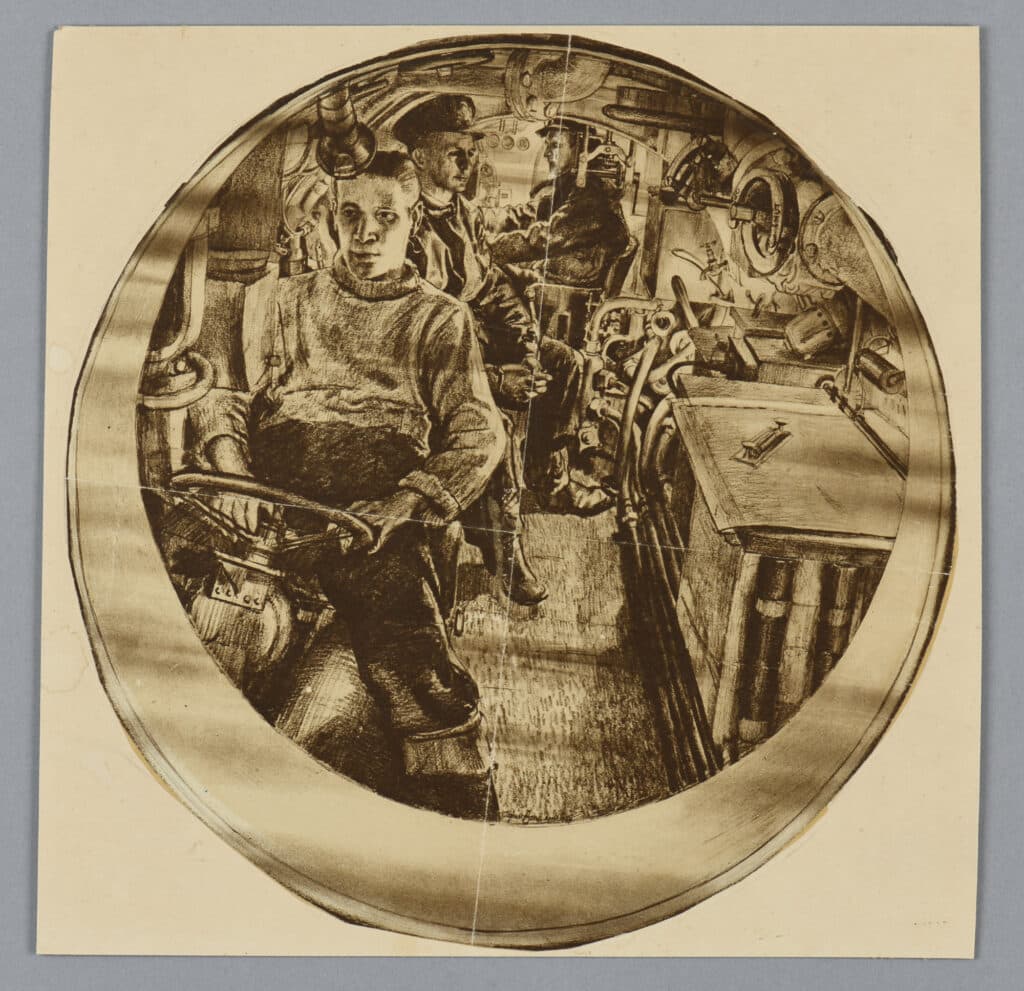
![National Museum of the Royal New Zealand Navy, 2007.46.3, Guy Todd, [date unknown] © CC BY 4.0.](https://navymuseum.co.nz/wp-content/uploads/2007.46.3_001-1024x740.jpg)
The road towards becoming a submarine diver was not easy nor free of risk. Oxygen poisoning was the main danger and resulted in multiple deaths during training at the naval and submarine bases HMS Dolphin and HMS Varbel. Initial practical training consisted of divers-to-be wearing swimming trunks, goggles, nose clips, and a ‘Davis Escape Apparatus’ strapped to their chests, entering into a compartment which was then completely flooded whilst an instructor observed through a porthole.[3]
However, once training progressed to being aboard a real midget submarine many men were forced to drop out – unable to cope with the claustrophobic nature of work within very confined spaces.[4]
After moving on to performing daily escape routines, where divers would drill leaving the submarines underwater to cut nets, the official divers were finally selected.
Divers, as skilled specialists, were revered by their fellow trainees – who themselves would go on to perform crewing duties aboard the vessels.[5]
As well as producing many two dimensional works of submarines, Todd also reproduced the subject of one his paintings into a three dimensional miniature model of a midget submarine. This intricate creation, which is 45 centimetres long, shows the vessel half out of the water, creating wake as it speeds along the surface.
[1] Benson, James and Warren, C.E.T.. 1953. Above Us the Waves: The Story of Midget Submarines and Human Torpedoes. George G. Harrap & Co. LTD. Page 218.
[2] Benson. Above Us the Waves. Pages 218 – 233.
[3] Todd, Guy. The Memoirs of Service in midget submarines 1944-1945. Written March 1996, unpublished. Part of the New Zealand Navy Museum Collection, object number: 2007.46.6. Page 2.
[4] Guy. The Memoirs of Service. 2007.46.6. Pages 5 – 6.
[5] Ibid.
Bibliography
Benson, James and Warren, C.E.T.. 1953. Above Us the Waves: The Story of Midget Submarines and Human Torpedoes. George G. Harrap & Co. LTD.
Todd, Guy. The Memoirs of Service in midget submarines 1944-1945. Written March 1996, unpublished.

